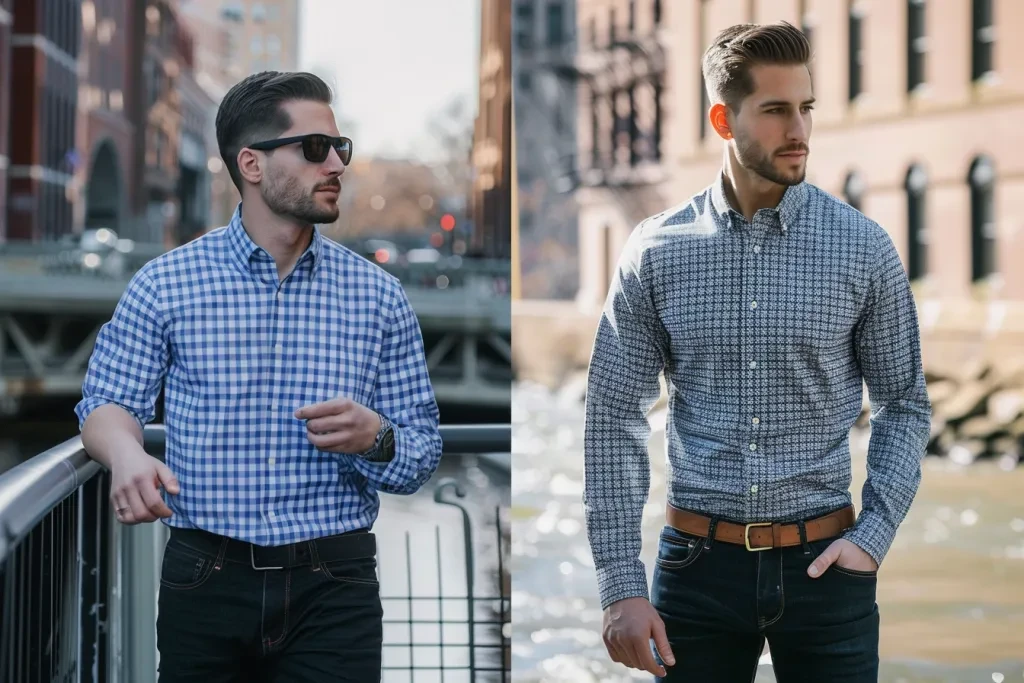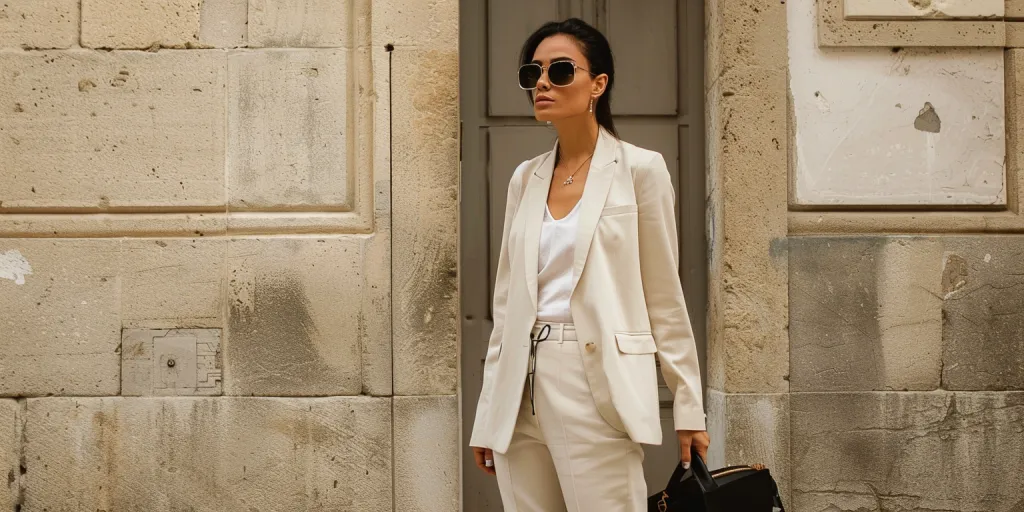In the ever-evolving world of apparel, work clothes have emerged as a dynamic segment that blends functionality with fashion. As we step into 2025, the demand for work attire that not only meets professional standards but also aligns with personal style and comfort is on the rise. This blog delves into the latest trends shaping the work clothes industry, offering insights for business buyers looking to stay ahead in the global market.
Table of Contents:
– Market Overview
– The Rise of Performance-Driven Workwear
– Style Meets Functionality in Work Clothes
– Fabric Innovations and Tech Integration
– Cultural Influences and Heritage in Workwear
– Conclusion
Market Overview

The work clothes market has witnessed significant transformations over the past few years. With the rise of remote work and hybrid models, the definition of work attire has expanded beyond traditional office wear. In 2025, the market is characterized by a diverse range of styles that cater to various professional environments, from corporate offices to creative studios and industrial settings. The growing emphasis on employee well-being and productivity has also driven demand for work clothes that offer superior comfort and functionality. As businesses prioritize sustainability, eco-friendly materials and ethical production practices are becoming key considerations for buyers.
According to Research and Markets, the global workwear market is projected to grow by USD 6.29 billion during 2023-2028, accelerating at a CAGR of 5.96% during the forecast period. This growth is driven by the strict implementation of workplace safety standards in developed countries, innovative product offerings by vendors, and growing demand from end-user industries. The market is segmented by end-user (men and women), product (apparel and footwear), and geographical landscape (APAC, North America, Europe, South America, Middle East, and Africa).
The report also highlights the increasing focus on emergency management and the introduction of asset tracking and Internet of Things (IoT) features as key drivers of market growth. Additionally, the launch of women-centric personal protective clothing is expected to lead to sizable demand in the market.
Regional insights reveal that the U.S. market is estimated at $4.9 billion in 2023, while China is forecasted to grow at an impressive 8.3% CAGR to reach $5.5 billion by 2030. Other key regions, including Japan, Canada, Germany, and the Asia-Pacific, are also expected to experience significant growth.
Key players in the workwear market include 3M Co., A. LAFONT SAS, Aditya Birla Management Corp. Pvt. Ltd., Ansell Ltd., Ben F. Davis Co., Berne Apparel, Carhartt Inc., Delta Plus Group, H T Hughes and Co. Ltd., Harveys of Oldham Holdings Ltd., HejMar AB, Honeywell International Inc., Hultafors Group AB, J and A International Ltd., Lakeland Industries Inc., Portwest Clothing Ltd., Sioen Industries NV, VF Corp., W. L. Gore and Associates Inc., and Wearwell Ltd.
Future trends in the workwear market include the increasing adoption of sustainable and ethically produced clothing, driven by consumer behavior trends and regulatory requirements. The integration of innovative materials and technologies, such as smart textiles and antimicrobial fabrics, is also expected to shape the future of workwear.
The Rise of Performance-Driven Workwear

In 2025, the workwear industry is witnessing a significant shift towards performance-driven apparel. This trend is characterized by the integration of advanced materials and ergonomic designs aimed at enhancing both productivity and comfort. According to the “MAN and Welcome Edition S/S 25” report, workwear is evolving with updates in print and color, particularly in staple items like the four-pocket chore jacket overshirts. These garments are not only functional but also stylish, featuring railroad-striped, distressed, and printed versions that cater to the classic ’90s aesthetic.
The focus on performance is evident in the use of moisture-wicking fabrics and stretchable materials that allow for greater flexibility and ease of movement. Ergonomic designs are becoming a standard, ensuring that employees can perform their tasks efficiently without compromising on comfort or professional appearance. Brands are increasingly creating garments that adapt to various work environments, offering versatility and durability. This trend is not just about functionality; it’s about creating workwear that supports the dynamic needs of modern professionals.
Style Meets Functionality in Work Clothes

The fusion of style and functionality is a defining trend in the work clothes industry. Today’s professionals are looking for attire that not only meets workplace requirements but also reflects their personal style. This has led to the emergence of work clothes with sleek designs, contemporary cuts, and a wide range of colors. The “Magic Project Las Vegas S/S 25” report highlights the rise of the workwear jacket, which continues to gain popularity with styling modifications such as contrast topstitching and biker/moto references.
Customization options are also gaining traction, allowing businesses to tailor workwear to their brand identity and employee preferences. This trend is particularly evident in the incorporation of traditional patterns and motifs into modern work attire, as reported by the “Catwalk City Analytics New York Men’s S/S 25” document. By embracing cultural diversity, brands are creating work clothes that resonate with a global audience and foster inclusivity.
Fabric Innovations and Tech Integration

Advancements in fabric technology and tech integration are revolutionizing work clothes. Innovative materials such as smart textiles and antimicrobial fabrics are being incorporated into workwear to enhance comfort and hygiene. The “Collection Review Men’s Key Trends S/S 25” report notes the use of regenerative cotton for sustainable denim options, highlighting the industry’s commitment to sustainability.
Tech integration is also making its way into the industry, offering functionalities like temperature regulation and biometric monitoring. These innovations are not only enhancing the user experience but also setting new standards for work attire. The integration of wearable technology is becoming more prevalent, providing employees with tools that can improve their work efficiency and overall well-being.
Cultural Influences and Heritage in Workwear

Cultural influences and heritage are playing a significant role in shaping work clothes trends. As businesses operate in increasingly diverse environments, there is a growing appreciation for workwear that reflects cultural identities and traditions. The “Design Capsule Women’s Modest Meta Classical S/S 25” report emphasizes the importance of incorporating traditional craftsmanship into modern work attire.
This trend is evident in the use of traditional patterns, motifs, and craftsmanship, which are being integrated into contemporary designs. By embracing cultural diversity, brands are creating work clothes that resonate with a global audience and foster inclusivity. This approach not only enhances the aesthetic appeal of workwear but also promotes a sense of belonging and identity among employees.
Conclusion
As we navigate through 2025, the work clothes industry continues to evolve, driven by a blend of performance, style, and cultural influences. For business buyers, understanding these trends is crucial to making informed purchasing decisions that align with the needs of their workforce. By embracing the latest innovations and cultural nuances, businesses can ensure that their work attire not only meets professional standards but also enhances employee satisfaction and brand identity.
Looking ahead, the future of workwear is likely to be shaped by further advancements in technology and a deeper understanding of cultural diversity. As the industry continues to innovate, we can expect to see work clothes that are not only functional and stylish but also sustainable and inclusive. This evolution will undoubtedly set new benchmarks for what workwear can achieve, making it an integral part of the modern workplace.




